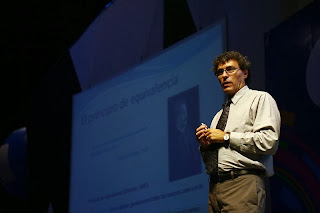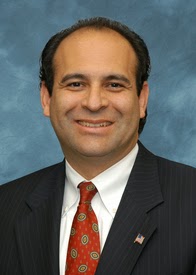 |
| StopBullying.gov |
Sadly, it's happened again. And each time it happens, I am diminished in the spirit of John Donne's Meditation 17; we are diminished as a nation because brilliance that shouldn't die so young, a candle that should illuminate the darkness...is extinguished.
It's not the first time I've discussed bullying. Scientists get bullied too, many are the survivors of some pretty awful bullying for just being curious; just being different than the "cool, accepted norms." Now, the bullies are young earth advocates, climate change deniers, museums that have Fred and Barney; dragons and zip lines (see Sunday's rant). Lately, the bullies staged a "Seinfeld shutdown" and come out of it in the spirit of Macbeth: "like sound and fury, signifying nothing!"
The dark side of technology is it empowers narcissistic psychopaths. Those are the only words that come to mind when disengagement, transfer to another school only intensifies pursuit for the perverse pleasure of causing harm to a fellow human being. Then when the unthinkable happens and that person takes their own life, the Facebook post is "IDGAF" with 30 likes? Of course now, the account was hacked. That remains to be proven. I sincerely hope if true, they do. It does not absolve them from the physical abuse Rebecca Ann Sedwick received from them offline; I can only imagine the hateful name-calling; the social ostracizing. If they were truly innocent, when she left their school, they should have left her alone.
The narcissists are not all young, as former NY congressman Anthony Weiner lived long enough to see himself become a byword. Internet addiction disorder seems to suggest stereotypical nerds, but I think it is the act of esteeming something that amounts to ones and zeros; mean girls and idols; more important than yourself feeds into a pathology that previously might have in other times made someone a successful "Type A."
I personally witnessed a brouhaha almost ignite in a 4th period physics class...over Facebook...on what one of the young ladies said about themselves to others. This is a generation that compared to previous ones - coming through segregation, poll taxes, Jim Crow and Civil Rights; The Vietnam War; the draft; the Cuban Missile Crisis; The Korean War; The Cold War; WWII and "meatless Tuesdays" have more privilege and less sacrifice than previous ones; their only crisis growing up in the shadows of 9-11, Afghanistan and Iraq...and bullies.
I've recently experienced similar treatment from a religious zealot. A year older than I from the same high school, I don't have much of a recollection of him. I've blocked him, and liberally block anyone else that I think not worth my time. Life is too precious and short. As a survivor of old-school, offline bullying, I relate too well, too personally with each of these stories.
Our minds were made for reason and real problems, reading literature, campfires and conversations. I will finish this post, as I do others in about 20 Terran minutes. I'll then go read an assignment and do problems in solid state electronics. I'll look at my Kindle and laugh. I'll talk to people and treat them with respect.
This is an essay I wrote regarding a young lady that took her life in NY earlier this year.
This, along with gun violence, is becoming a dark national addiction for which we need a Betty Ford intervention.













